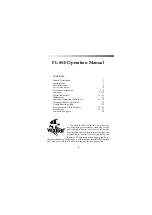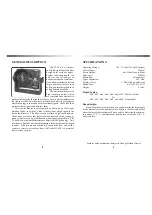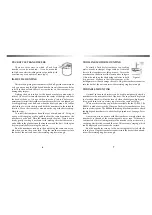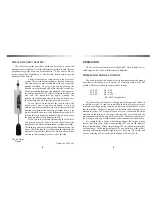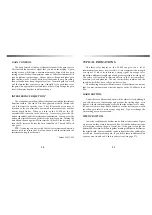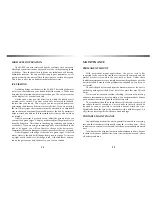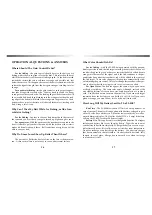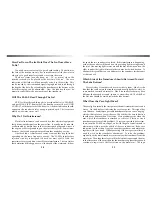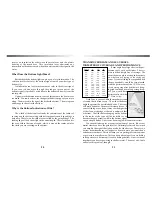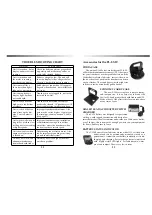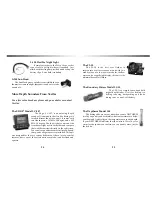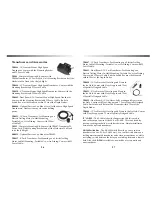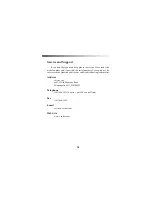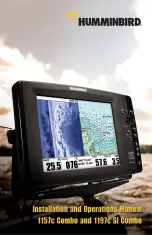
18
19
How Far Down The Ice Hole Does The Ice-Ducer Have
To Be?
You need water contact only to get a depth reading. The bottom or
the face of the transducer, only, has to make contact with the water in
order to get a good transfer of sound waves into the water
There are times (usually deep ice - 36" or more) when the
transducer needs to be placed at the bottom of the ice. The zero
indication of the flasher will be unusually wide, 8 to 10 feet wide. This
can be caused by the transmitted signal ringing back and forth through
the depth of the hole. By extending the transducer to the bottom of the
hole this ringing can be eliminated. Now the lake depth must be
mentally corrected for the new position of the transducer.
Will The FL-8SE Read Through The Ice?
YES! It will easily read through ice, provided the ice is CLEAR ICE
and not MILKY ICE. Remember, the transducer must have GOOD
CONTACT with the surface of the clear ice. A bottom indication should
appear on the sounders dial at an appropriate depth. The ice surface
must be wet; water works well.
Why Do I Get Interference?
Electrical interference can be caused by other electrical equipment
that put unwanted signals on the power line. It usually can be reduced
or eliminated by simple fixes such as resistor spark plugs and wires on
the engine or better grounding on the electrical system. Sometimes,
however, there can be equipment problems that need shop service.
Another kind of interference comes from another depth finder
operating on the same frequency nearby. The FL-8SEs interference
rejection circuitry is designed to knock out most or all of this, but
sometimes severe conditions can still cause interference. The two factors
that determine if this happens are: a) the depth of the water and, b) how
far apart the two sounders are placed. If this interference is happening,
each of the sounders will have a non-stop rotating light moving around
the dial. One moving light rotates around the dial clockwise and on the
other sounder the light will rotate in the counter clockwise direction. To
eliminate this problem you can either move the sounders farther apart
or shut one off.
Which Side of the Transducer Should Be Aimed Toward
The Lake Bottom?
Most of today's transducers have two sides to them. Side A is the
side that the cable enters the transducer and usually has holes, slots, or
some method to attach a bracket to. Side B is usually flat but may have
different shapes, such as round, square, or arrow shaped. The Side B or
the Flat side should be aimed toward the lake bottom.
What Does the Zero Light Mean?
The zero light is actually the start point of the units transmission of sound
waves. On the display it indicates the zero foot point. This signal has
very little use. Sometimes a portable transducer arm can cause "ringing"
which will display as a very wide zero. The width of the zero indication
should never be more than 5 feet wide. Most problems occur when the
arm, which the transducer is attached to, is metal. Plastic or wood
transducer arms cause little problems. To test your portable box system,
in air, turn the FL-8SE on, range 1, and with the gain control turned to
maximum position, note the width of the zero indication. If the zero
indication is wider than 5 feet, squeeze the transducer and metal arm
together with your hand. While squeezing, if the zero gets smaller you
need to work on the transducer attachment. To solve the problem,
especially with a metal transducer arm, remove the transducer from the
metal arm. Then tape three layers of black electrical tape around the arm
in the flat section of the arm, then lay the transducer against the tape and
continue to tape it onto the flat section on the metal arm. The tape

